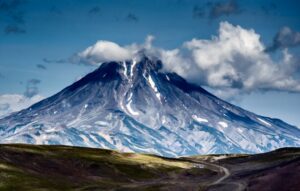According to residents, the air temperature in the eastern Siberian village of Essey dropped below -72˚C overnight on Jan. 10-11. If accurate, the temperature represents a new record low outside of Antarctica.
Unfortunately for record hopefuls and weather nerds, there’s no Central Siberian Department for Hydrometeorology and Environmental Monitoring (UGMS) weather station in Essey.
UGMS weather stations nearest to Essey during the cold snap read a mere -53˚C. So as it stands, the nearby Yakut village of Oymyakon — known as the Pole of Cold — still holds the official record low of -71˚C.

The village of Oymyakon still holds the official record low temperature outside of Antarctica. The village of Essey is nearby. Map: Google Earth
“If local thermometers show such a temperature there, I doubt their reliability…we cannot confirm or deny,” Dmitry Ulyanov, the lead forecaster at UGMS, told the Russian newspaper Kommersant.
Felt boots and firewood
“Well, today it’s -64°C, but yesterday a photograph from Naberezhnaya Street [showed] -72°C and even three divisions lower. It is -75°C practically,” said Essey resident Andrey Miroshko. For Fahrenheit aficionados, that’s a nostril-hair-curling -103˚F.
According to a tweet by mountaineering outlet Russian Climb, residents in Essey heat their homes with firewood or electricity. And while the temperature was extreme even by eastern Siberian standards, it appears that life in the village went on pretty much as usual. A post on RIA Novosti’s Telegram channel indicated that everyone in Essey had access to firewood and water and that shops continued operating.
Today the temperature -73C was registered in small town in Krasnoyarsk region. This is the strongest cold snap in the memory of local residents. Houses are heated with firewood or electricity
— Russianclimb (@russianclimb) January 12, 2023
Russian Climb editor Anna Piunova reported on Facebook that no one in the village died as a result of the cold snap.
“The locals wrote something like, ‘yeah it was cold and we had to wear felt boots to keep our feet warm,'” Piunova recounted.
As of data collected in 2014, 614 people live in Essey. The village is nestled on the shores of Lake Essey, above the Arctic Circle. The settlement is a long-time crossroads of northern trade routes, first mentioned in historical documents in 1632. It is primarily inhabited by the Essene Yakut ethnic group.






